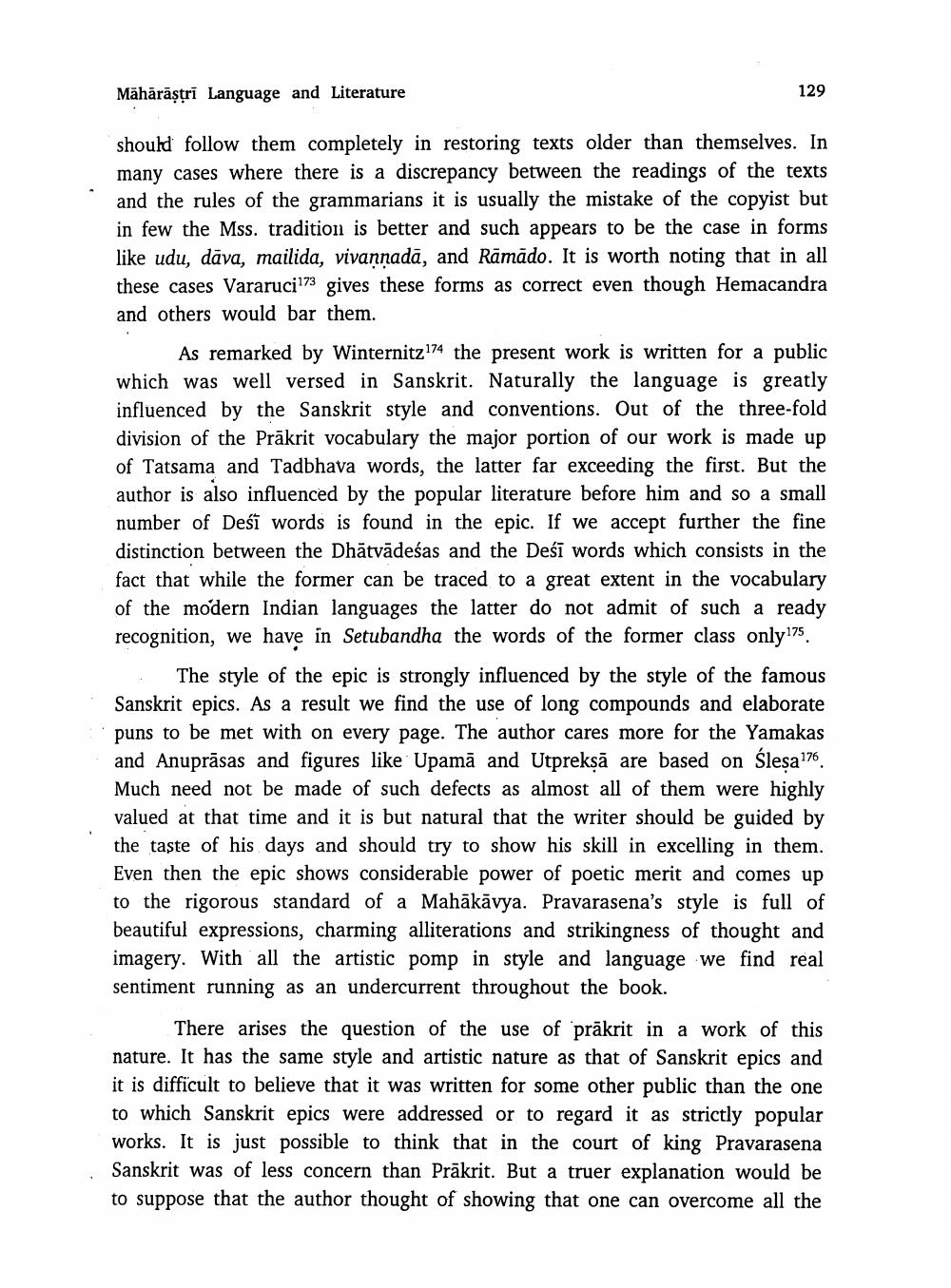________________
Māhārāștri Language and Literature
129
should follow them completely in restoring texts older than themselves. In many cases where there is a discrepancy between the readings of the texts and the rules of the grammarians it is usually the mistake of the copyist but in few the Mss. tradition is better and such appears to be the case in forms like udu, dāva, mailida, vivannada, and Rāmādo. It is worth noting that in all these cases Vararuci173 gives these forms as correct even though Hemacandra and others would bar them.
As remarked by Winternitz 174 the present work is written for a public which was well versed in Sanskrit. Naturally the language is greatly influenced by the Sanskrit style and conventions. Out of the three-fold division of the Prākrit vocabulary the major portion of our work is made up of Tatsama and Tadbhava words, the latter far exceeding the first. But the author is also influenced by the popular literature before him and so a small number of Desi words is found in the epic. If we accept further the fine distinction between the Dhātvādeśas and the Deśī words which consists in the fact that while the former can be traced to a great extent in the vocabulary of the modern Indian languages the latter do not admit of such a ready recognition, we have în Setubandha the words of the former class only 175.
The style of the epic is strongly influenced by the style of the famous Sanskrit epics. As a result we find the use of long compounds and elaborate puns to be met with on every page. The author cares more for the Yamakas and Anuprāsas and figures like Upamā and Utpreksā are based on Ślesa 176. Much need not be made of such defects as almost all of them were highly valued at that time and it is but natural that the writer should be guided by the taste of his days and should try to show his skill in excelling in them. Even then the epic shows considerable power of poetic merit and comes up to the rigorous standard of a Mahākāvya. Pravarasena's style is full of beautiful expressions, charming alliterations and strikingness of thought and imagery. With all the artistic pomp in style and language we find real sentiment running as an undercurrent throughout the book.
There arises the question of the use of prākrit in a work of this nature. It has the same style and artistic nature as that of Sanskrit epics and it is difficult to believe that it was written for some other public than the one to which Sanskrit epics were addressed or to regard it as strictly popular works. It is just possible to think that in the court of king Pravarasena Sanskrit was of less concern than Prākrit. But a truer explanation would be to suppose that the author thought of showing that one can overcome all the




